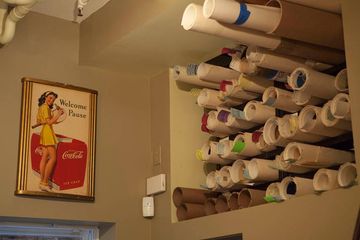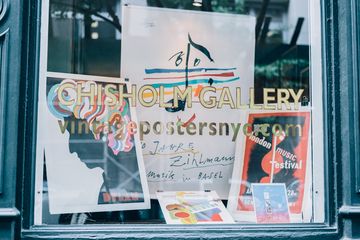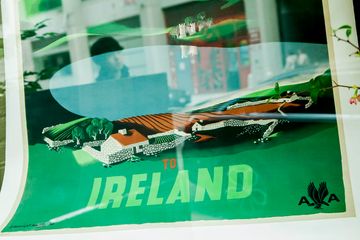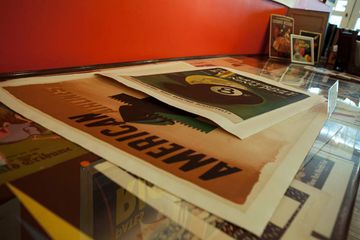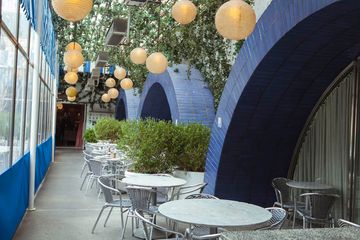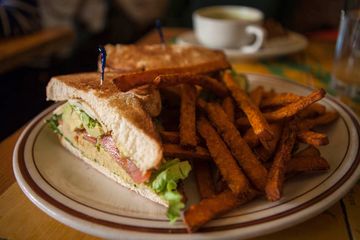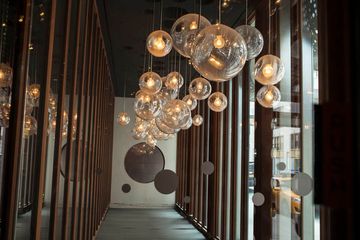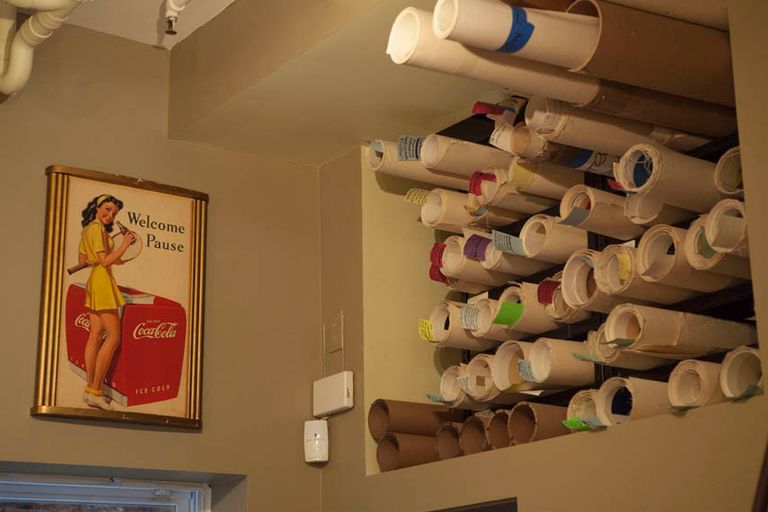
There are always surprises to be found on the side streets and this was another terrific one for me when I opened the old stable door and entered this gallery. I have always had a great appreciation for the original vintage lithographic advertising posters that Chisholm has hanging on its walls. Gail Chisholm explained that her interest in these 1920-1960 pieces of art grew out of her flirtation with collecting antiques when she was younger. Little by little she made purchases of posters until it began to take over everything else and the realization hit that she was to become a dealer. In 1975, Gail opened her first gallery in the Village and her passion has not waned. She is involved in every purchase as she tries hard to break away from the obvious and come up with the more unusual in graphics. “I have developed a following and it makes for nice relationships," she told me. Her clientele is mostly individual collectors who purchase for the pleasure of living with something they fall in love with, but there are also the corporations and restaurants who appreciate Gail’s taste for their walls too. When I asked Gail how she found being on a side street, she quickly responded that she is thrilled to be here. She prefers the less frequent, yet more serious customer to the high volume of street traffic that she had experienced years ago. “Yes, this is a slower-paced business than I once had, but it allows me to spend more time with each customer, and this seems to be a winning formula.”
